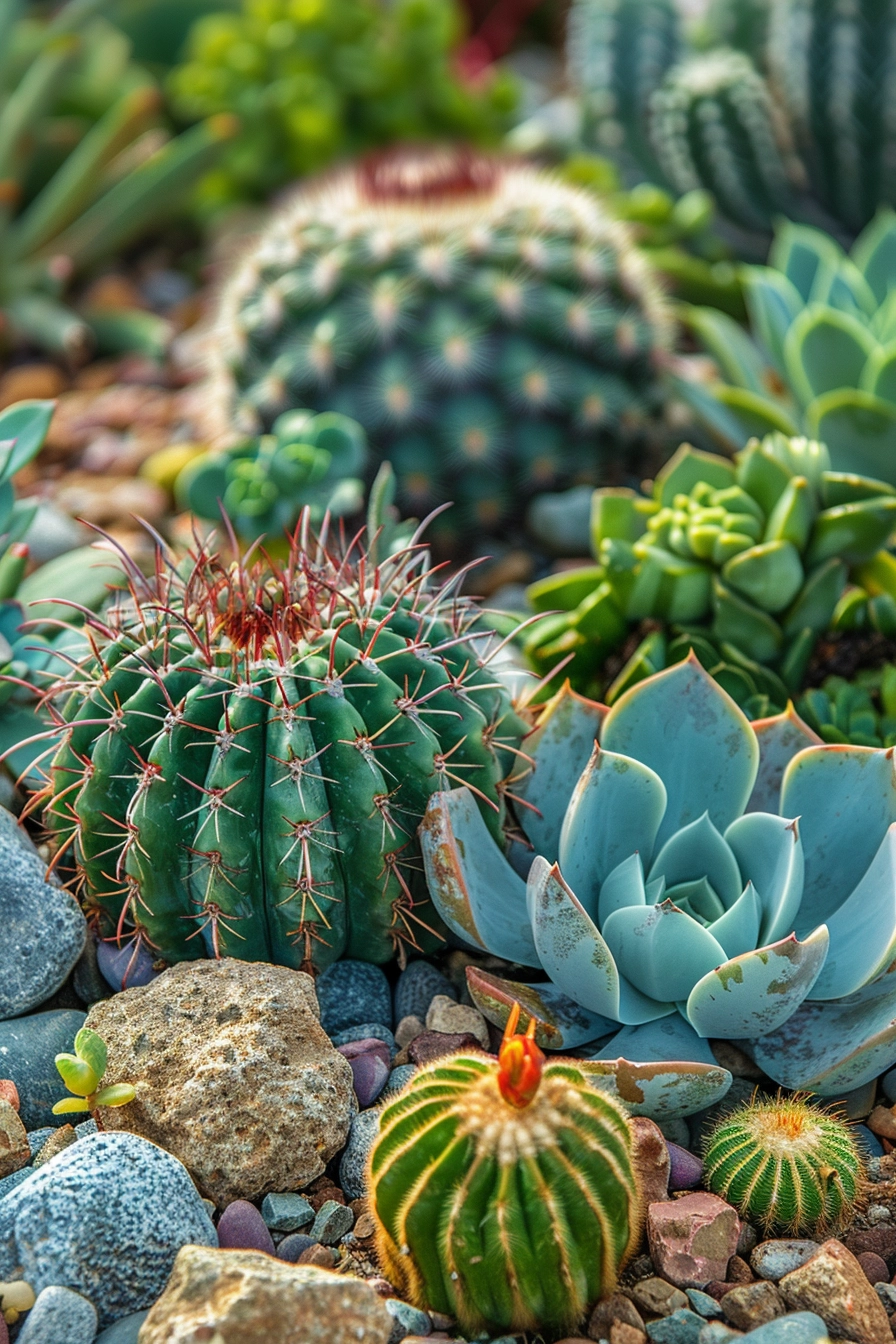In a world grappling with the effects of climate change and dwindling water resources, the significance of drought-friendly landscapes is becoming more of a hot topic and a priority for homeowners everywhere. Drought-tolerant landscapes not only help conserve water but can also lower water bills and foster biodiversity, enhancing the beauty of our outdoor spaces.
Drought-tolerant landscape design is a strategic approach to creating outdoor spaces that thrive in arid and water-scarce conditions. It encompasses practices such as selecting drought-resistant or drought-tolerant plants, employing smart gardening practices like efficient irrigation systems and mulching, and considering the specific needs of different regions in the United States. By following these principles, homeowners can create a smart, well-designed garden that conserves water and flourishes in arid climates.
Key Takeaways:
- Designing a drought-tolerant backyard landscape helps conserve water and lower water bills.
- Drought-tolerant landscapes foster biodiversity and enhance outdoor spaces.
- Key principles of drought-tolerant landscape design include selecting drought-resistant plants, using efficient irrigation systems, and considering regional needs.
- Drought-tolerant landscapes can thrive in various regions, including arid and semi-arid climates.
- By implementing water-saving landscaping techniques, homeowners can create eco-friendly and sustainable gardens.

Drought-Resistant and Drought-Tolerant Plants for a Water-Saving Landscape
When designing a drought-tolerant backyard landscape, selecting the right plants is crucial. Drought-resistant plants are species that have natural adaptations to withstand prolonged periods of drought and require minimal watering. Examples of drought-resistant plants include agave, yucca, lavender, cacti, ornamental grasses, and certain species of native wildflowers.
On the other hand, drought-tolerant plants can tolerate drought to some extent but may require occasional watering or care during extended dry periods. It’s important to focus on native plants and low-maintenance plants when selecting drought-resistant plants for a backyard landscape. Native plants have developed and adapted to the local environmental conditions over time and have a better chance of thriving in the yard.
Additionally, plants with characteristics such as succulents that can store water in their leaves or stems, small or narrow leaves to reduce water loss, and a waxy coating or hairy texture on their leaves to reduce evaporation, are ideal choices for water-wise landscaping.

“By choosing drought-resistant and drought-tolerant plants, you can create a beautiful, low-maintenance landscape that saves water and flourishes even in dry conditions,” says gardening expert Angela Johnson.
Designing a Drought-Tolerant Landscape for Different Climate Regions in the United States
Drought-tolerant landscaping has become increasingly popular in regions across the United States due to water scarcity and the prevalence of arid climates. Homeowners in the Southwestern United States, including California, Arizona, Nevada, and New Mexico, are particularly prioritizing drought-tolerant landscaping to conserve water in their outdoor spaces. The limited water resources in these areas have encouraged residents to embrace sustainable landscaping practices that thrive in arid conditions.
In Texas, where water scarcity is a growing concern, especially in the western and central regions, homeowners have also recognized the value of drought-tolerant landscaping. By selecting resilient plants and incorporating smart irrigation systems, Texans can create beautiful landscapes that require less water, enhancing not only the aesthetics but also the environmental sustainability of their properties.
Similarly, mountainous and high desert regions, such as Colorado, Utah, and parts of Idaho and Montana, have witnessed a surge in the popularity of drought-tolerant landscapes. The adaptation of appropriate plant species and water-efficient practices in these drier climates allows homeowners to design visually stunning, low-maintenance landscapes that can thrive without excessive water dependency.
Even in regions with abundant rainfall like Florida, certain areas such as the Florida Keys and parts of southern Florida face water scarcity challenges. As a result, drought-tolerant landscaping has emerged as a viable solution to conserve water resources while still enjoying beautiful outdoor spaces. By selecting native plant species and implementing water-saving techniques, Floridians can create eco-friendly landscapes that are both visually appealing and environmentally responsible.


